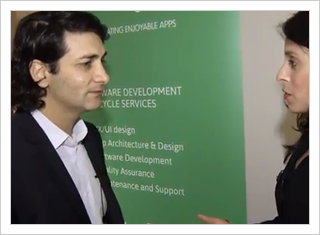People buy from people they like. True or false?

Sales trainers have taken this as a given for so many years that now people are starting to say it’s a myth.
But let’s take other sales “given”: people make purchasing decisions with their heart, and then justify their decisions with their head.
This is not a myth. This is a scientifically proven fact.
When faced with large purchasing decisions, customers make an emotional decision first, and then justify that decision with facts and figures. That’s just the brain’s way to subconsciously and efficiently process many confusing data points to help you make a decision without overwhelming you.
You can help influence that emotional decision by making your customers like you. This is often referred to as the likability factor.
Neurology and Decision-Making
Neurologists have shed new light on the way the emotional brain works, and how it complements the prefrontal cortex of the brain.
The prefrontal cortex is attributed with the ability to make decisions. It’s responsible for our executive function. It is the logical part of our brain that enables us to decide between conflicting pieces of data.
However, the prefrontal cortex is limited in how much data it can process.
You’ve probably heard it said that you can only keep seven items in active memory, and after that your brain gets confused. The prefrontal cortex controls our active memory. But the sub-conscious brain is able to process thousands of millions of data points at a time.
The question is: how can we consciously make decisions with the thousands and millions of data points floating around in our sub-conscious brain? The answer is our emotions.
To illustrate how powerful our emotions are for helping us make decisions let’s go back to the 2002 Super Bowl between the New England Patriots and the St. Louis Rams.
In the book “How We Decide,” author Jonah Lehrer describes the nail-biting last minute of a tied game between the New England Patriots and the St. Louis Rams. The Patriots are the underdogs of the game, and they have the ball. They have no time-outs, and everybody expects them to kneel down and take the game into overtime.
But they decide to go for a scoring drive. All hopes hinged on young quarterback Tom Brady, the second-string quarterback for the Patriots.
Brady was the 199th pick in the 2000 draft. He was considered too small to be an effective quarterback. But the Patriots chose him for his decision-making skills.
As Lehrer describes:
“Now Brady is in the spotlight, standing all by himself in the shotgun formation. His decision-making skills are about to be put to the test. He yells an audible to his tight end, then turns and yells at his wide-receivers. The ball is snapped. Brady drops back, looks upfield, and understands instantly that the Rams have fallen into a tight zone coverage. They know the Patriots are going to pass; the cornerbacks are looking for an interception. Brady’s primary target is covered, so he looks to his next target; he’s also covered. Brady avoids the outstretched arm of a Ram defensive lineman, steps forward, and makes a short pass to his third target, the running back J.R. Redmond. It’s a gain of five.” (“How We Decide,” Jonah Lehrer, Houghton Mifflin Harcourt pp. 1-2.)
The Patriots continued the next few plays until they were in field goal position, which they successfully completed to win the Superbowl.
What made Brady so effective in the last minute of this important game? Lehrer explained that Brady had a “feeling” about the decision. He would feel twinges of fear when considering receivers with coverage from burly defenders. But he would feel good when he spotted the correct target.
That’s the power of the sub-conscious brain – the emotional brain.
What does this have to do with client management? When your customer makes a decision to buy using their gut instead of their brain, they have just used the power of their emotional brain to make a very important decision.
You can influence this emotional decision-making process by employing the likability factor.
5 Client Management Tips to take advantage of the likeability factor
Making Sense CEO Cesar DOnofrio believes strongly in the likability factor, which he discovered after opening up an office in San Antonio, TX so he could be close to his clients.
As a result of his experience successfully selling services to companies such as Dell Computer, Rackspace and The Scooter Store, Cesar has developed 5 client management tips that leverage the likability factor.
1. Get Personal
Establish a personal relationship with your client, especially if you intend to have a long-term relationship with him.
Take him to lunch. Breaking bread is a great way to break down the protective walls that keep people on guard. Share personal details about your family life. Find out about your clients’ family and personal life.
This is a great way to establish a connection that goes beyond the “bits and bytes” discussion about your product or service. Your customer sees you as a real person, somebody who cares. And when your client shares personal details with you, you become their confidant.
This creates a very powerful personal bond.
2. Create a Safe Environment for Sharing
It’s important to listen to what your customers say. But it’s even more important to listen without pitching or judging. Make it safe for your client to share things with you. Let them know they can give you feedback about your service, product, or people.
This not only puts your client at ease, but it can help you too: these are the moments when you can learn more about your company and how to improve your customer service.
3. Hire for Likability
If you provide a service, it’s important to hire skilled people. For example, Making Sense hires certified developers with lots of software development experience. But it’s essential to hire people who are likable. If your client-facing technical staff have zero people skills, this can kill your projects.
Your people are the face of your company. If your clients like your people, they’ll like your company. If they don’t like your people, you won’t have clients for long.
4. Be Seen Locally
Be “seen” on the local scene. Go to networking events. Speak at local workshops. Sponsor fund-raisers. Show up.
But don’t be a cheesy networker who hands out a business card every 30 seconds. Instead, be helpful to people. Offer to introduce people to potential clients or providers. If you can perform favors your reputation as a helpful person grows, and your likability factor will grow.
5. Keep Frequent Contact
Your clients want to hear from you on a regular basis. You’re not bothering them by calling them frequently. The worst thing you can do is to abandon your clients. Don’t let them feel like you only cared about them when you wanted to close the sale.
Call them. Invite them to lunch. Send them a written note.
Your next steps
The emotional brain is a powerful part of anybody’s decision-making toolkit. It can help you make decisions after you’ve considered all the data with your prefrontal cortex. It can help your customers make decisions in your favor.
Having your clients like you is a great way to leverage their emotional decision-making. But if you think this is just a cynical piece of advice to take advantage of your customers, consider this: who do you prefer to work with? People who are competent but unpleasant to work with? Or people who are competent, and make your day with a smile and a kind word?
To learn more about the nice, friendly, likable people of Making Sense, give us a call at +1 210 807 3552 or email us at hello@makingsense.com.
